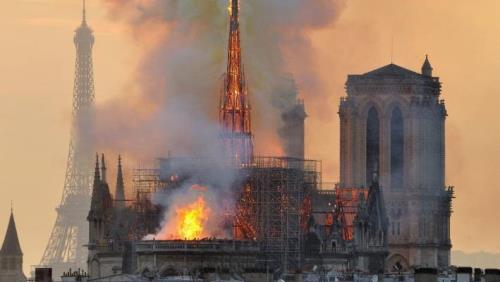Notre Dame fire: Pity the person who started the blaze
8 May 2019

The world watched in horror as Notre Dame Cathedral in Paris was burning.
Fortunately, it was saved from total destruction by the courage of the firefighters who responded to save this global icon.
The cause of the blaze has not been authoritatively determined, but investigators have focused on several theories.
One possibility was that the fire was caused by workers carrying out the renovations, a theory fuelled by the discovery of cigarette butts at the scene. The construction company has admitted that there were some workers who were smoking on site, despite a strict smoking ban.
However, the most likely theory, according to police, is that the fire was caused by an electrical short circuit. Only time will tell what the investigation reveals.
The smoking controversy raises an interesting question of whether or not, in New Zealand, an employer is liable for harm caused by the negligence of their employees.
The New Zealand position is that an employer is normally liable for the negligence of their employee though a doctrine known as vicarious liability. There has to be a sufficient connection between the wrongful act and the employment of the worker in question.
It has become uncommon for employer vicarious liability to come before the courts in New Zealand.
It does happen, such as the 1990s case of a garage owner who was held liable for exemplary damages for his employee's negligence in over-inflating a tyre, resulting in an explosion that seriously injured a customer.
Often specific legislation covers liability. The sale of liquor legislation is a case in point.
Recently a Dunedin bar was suspended from trading for two days, and the manager's certificate suspended, after one of its workers sold alcohol to a 17-year-old due to a mistaken date calculation. While the mistake was that of the employee, the employer faced serious consequences.
Beyond the liability of the employer, there is the question of if an employee is negligent, can they be dismissed for their negligence?
An interesting New Zealand case involved the New Zealand Herald and it dealt with exactly this point.
In the late 1990s, a senior journalist with the Herald, Ric Oram, was reporting on a liquor licensing hearing for the renewal of the licence for the Kaipara Tavern and for the issuing of a manager's certificate to David Smith.
Police strongly opposed this licence. Indeed, they said Smith was a gang leader and the police evidence at the licensing hearing at the local District Court was very damning.
They said Smith was the leader of career criminals. The police made extensive refence to details of his criminal record.
The hearing was of such importance that Oram arranged for a Herald photographer to photograph Smith, directing the photographer to a group leaving a nearby cafe.
The photographer did not photograph Smith, but instead mistakenly photographed a social worker who was attending the hearing in a supportive capacity.
Editorial staff decided that the article on the hearing should be a lead story for the Weekend Herald, and it appeared across the front page, accompanied by a large reproduction of the photograph. The caption referred to the subject of the photograph as a "gang chief", described him as David Smith and made extensive reference to the police evidence about his claimed criminal record.
The result was disastrous and may well have cost the Herald a big payment to the social worker.
Oram made a couple of important mistakes. He did not watch the photograph being taken and he did not subsequently check the photograph before publication. He was subsequently dismissed by the Herald for serious misconduct. The dismissal was ultimately upheld by a Court of Appeal.
The case is contentious because it was previously thought that a single act of negligence would be a matter of poor performance and would not justify dismissal without a warning. In the Oram case a single serious act of negligence led the court to the conclusion that dismissal was in the range of options that an employer could invoke. It could deeply impair trust and confidence in Oram. In the decades following, the Employment Relations Act has been amended to overturn the Oram decision and then amended again to let it stand.
A contentious decision if ever there was one.
In light of this legal background, would the smoking scaffolders, if they were breaching their obligations by smoking and caused a fire, lead to their employer being liable for the damage that followed under New Zealand law? And furthermore, could they be dismissed?
There are insufficient facts released to determine the potential liability of the employer. In respect of dismissal, if the workers disobeyed a clear instruction not to smoke, their employment could be in jeopardy.
One conclusion that is obvious is that the cost of restoring Notre Dame is so far beyond the likely resources of the restoration company in question, that even if there was liability, the contribution they are likely to be able to make would be a drop in the ocean.


